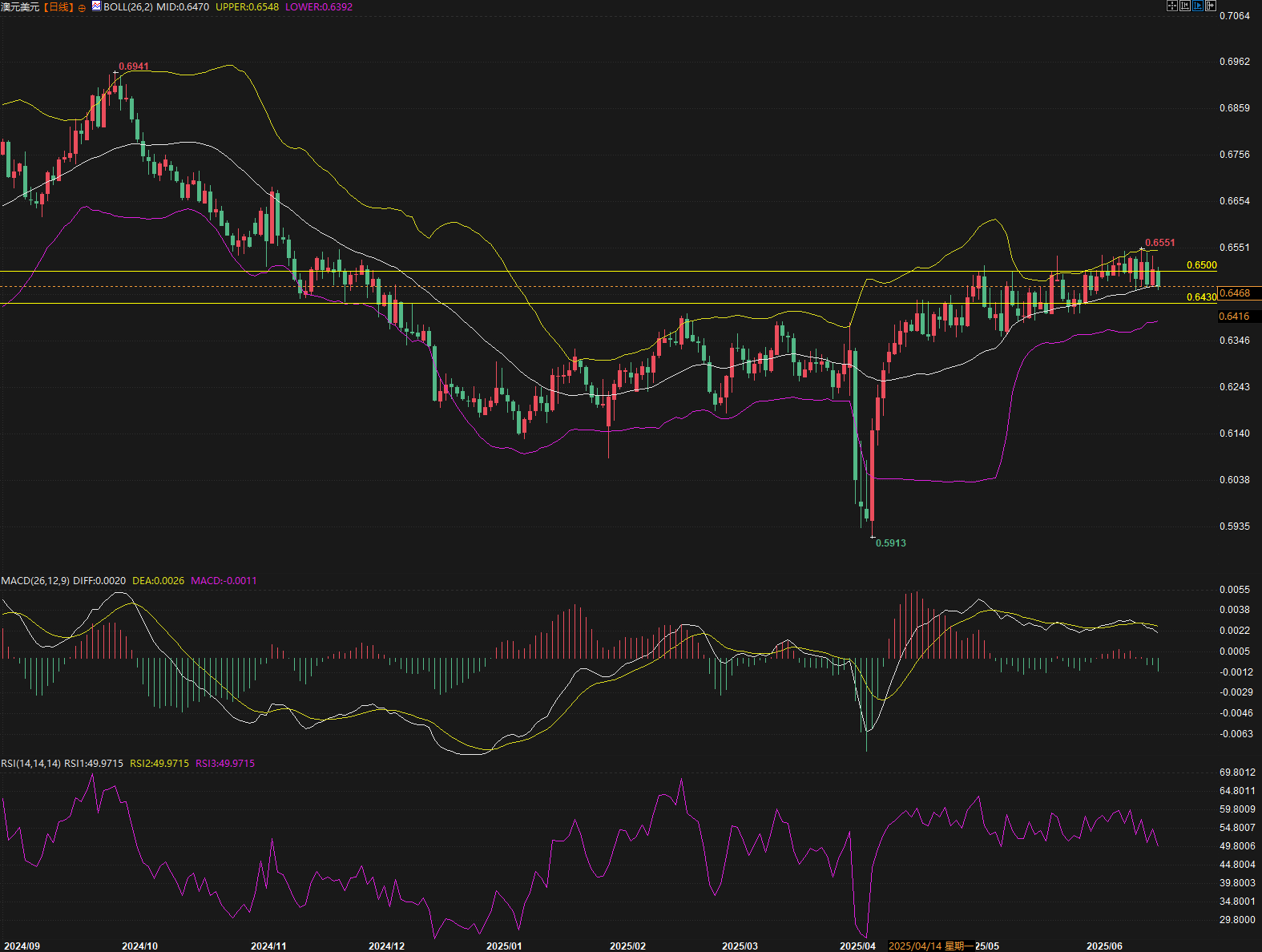Employment data makes things worse! Expectations of interest rate cuts in Australia rise: Do AUD bulls still have a chance?
2025-06-19 18:54:20

Fundamentals
Australia's May employment report showed weakening labor market momentum, with an unexpected drop of 2,500 new jobs, far below market expectations of an increase of 21,200, although the unemployment rate remained unchanged at 4.1% for the fifth consecutive month. Full-time employment increased by 38,700, while part-time employment fell sharply by 41,100, reflecting the divergence in the employment structure. The NAB employment sub-index plummeted to 0.4, the lowest level since January 2022, while the Westpac-Melbourne Institute unemployment expectations index rose 5% to 127.4, indicating that consumers expect unemployment to rise in the coming year.
The market currently has a 78% chance of a 25 basis point rate cut at the Reserve Bank of Australia meeting on July 8, and expects a total rate cut of 75-100 basis points in the next 12 months. In contrast, the Federal Reserve kept interest rates unchanged on Wednesday, but the dot plot showed that there were still two rate cuts expected this year. Chairman Powell issued a hawkish warning on the impact of tariffs on inflation at a press conference, which pushed the dollar to rebound.
Technical aspects:
From the technical analysis of the daily chart, the AUD/USD exchange rate is currently running near the middle track of the Bollinger Band, with the upper Bollinger Band at 0.655 and the lower Bollinger Band at 0.639. The exchange rate has been oscillating in the range of 0.6445-0.6550 in the past three weeks, and the two bottoming out on June 3 and 13 were supported in the 0.6445-0.6455 area.

The MACD indicator shows that the MACD line is at -0.0011, and the MACD histogram fluctuates in a narrow range near the zero axis, reflecting the lack of clear direction in the current market. The RSI relative strength index is at 49.97, which is in the neutral zone, showing neither overbought nor oversold conditions, suggesting that the exchange rate may continue to maintain a range oscillation pattern.
From the perspective of the moving average system, the exchange rate is currently running above the 200-period moving average, but is suppressed by the upper resistance line. Analysts believe that in the short term, the 0.6500 psychological barrier constitutes an important resistance level, which also forms a resonance resistance with the upper Bollinger band; in terms of support below, the 0.6445-0.6455 area is an important support in the near future. If it falls below this area, the exchange rate may further drop to around the lower Bollinger band of 0.639.
Market sentiment observation
The current market sentiment is cautious, and risk assets are generally under pressure. According to Reuters, the geopolitical situation in the Middle East is heating up, the Israel-Iran conflict is at risk of escalation, and the possible military intervention of the United States has further exacerbated the market's risk aversion. Against this backdrop, the US dollar, as a traditional safe-haven currency, has gained support, while risk-sensitive currencies such as the Australian dollar are facing selling pressure.
Traders are increasingly divided over the RBA's policy outlook, and while weak employment data provides a reason for a rate cut, the RBA's hawkish stance relative to other major central banks still provides some support for the Australian dollar. Increased volatility in equity markets has also affected exchange rate trends, with traders waiting for clearer directional signals.
Outlook
In terms of short-term outlook, the AUD/USD exchange rate is expected to maintain a range of 0.6430-0.6550. If the exchange rate can stabilize at the 0.6500 mark and break through with large volume, the next target will be the upper edge of the 0.6550 range. On the contrary, if it falls below the 0.6445 support level, the exchange rate may accelerate downward to the 0.6400 integer mark.
From a medium-term perspective, analysts believe that the divergence of central bank policies will continue to dominate exchange rate trends. If the Reserve Bank of Australia starts a rate cut cycle as expected by the market, while the Federal Reserve maintains a relatively tight policy stance, the AUD/USD may face further downward pressure; however, if the Federal Reserve cuts interest rates as scheduled this year and the Reserve Bank of Australia remains cautious, the exchange rate may gain momentum to rebound.
The long-term outlook depends more on the relative performance of the economic fundamentals of the two countries. Analysts believe that as a resource exporter, Australia's economic growth depends largely on global commodity demand, especially demand from the Asian market. If the global economic recovery continues, rising commodity prices will provide support for the Australian dollar. On the contrary, if global economic growth slows down, the Australian dollar may face greater downside risks.
- Risk Warning and Disclaimer
- The market involves risk, and trading may not be suitable for all investors. This article is for reference only and does not constitute personal investment advice, nor does it take into account certain users’ specific investment objectives, financial situation, or other needs. Any investment decisions made based on this information are at your own risk.










